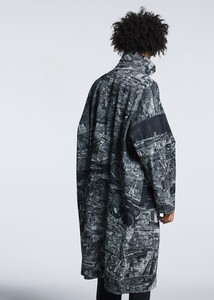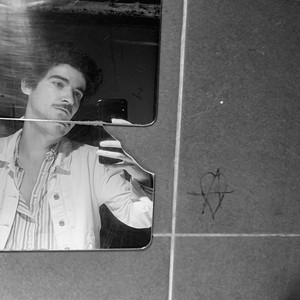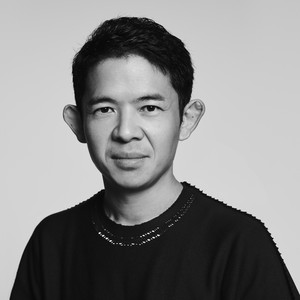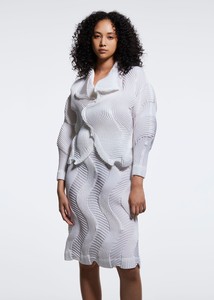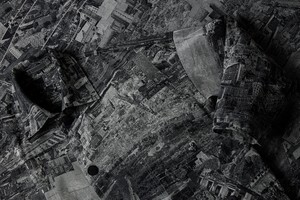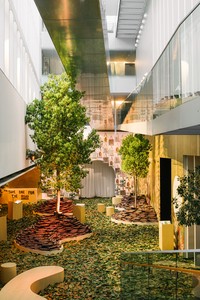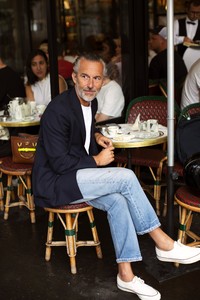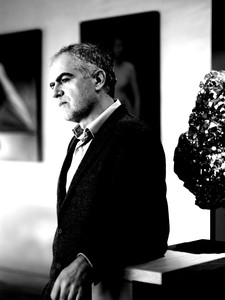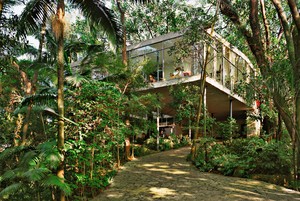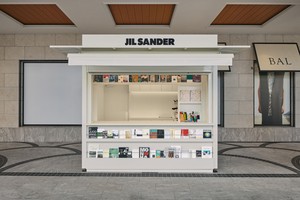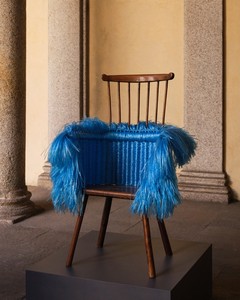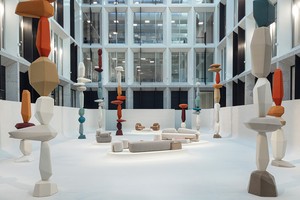Wyatt AllgeierBefore you started working on A-POC, you were the creative director and head designer for the main Issey Miyake brand. What drew you to shift your focus to the A-POC project?
Yoshiyuki MiyamaeI belong to Issey Miyake’s world, and that’s a very specific, special world that he created. He realized that in order to make the materials he needed, he would need to develop those materials on his own terms, on his own timeline. Fashion evolves; it is always changing, always developing. By launching A-POC, Mr. Miyake was able to honor that philosophy and make room for more research, study, and evolution. My work with the Miyake Design Studio has fluidly moved between different facets and projects.
WACould you quickly define what A-POC stands for?
YMA-POC is “A Piece of Cloth.” This is all about Mr. Miyake’s vision to put everything into one piece of cloth—this piece of cloth is limitless; it’s not just fashion. His vision was bigger than that, wider than that. A-POC is not a style, really; it’s more of a concept. That’s why it’s sometimes difficult to explain what it is.
WAI found it very interesting that Isamu Noguchi was a huge influence for Mr. Miyake, that two bridges in Hiroshima that Noguchi designed set Mr. Miyake on his path toward design. The way that fine art and architecture continue to filter into the larger process for Issey Miyake and A-POC really honors that origin. Can you speak about collaborating with visual artists and what that means for A-POC and for you personally?
YMI like to learn from artists’ perspectives, points of view, which are different from ours. The common thing between Mr. Noguchi and Mr. Miyake is that there is always research and an investigation around distance: distance between body and cloth, and distance between architecture and body. What’s comfortable? What is the distance? This is something that you need to imagine and negotiate.
WAThere’s always hybridity with A-POC—it’s machine and man; it’s flat, it’s three-dimensional—and then you bring in this other element of collaboration with architecture, medicine, photography, etcetera. How do you decide on collaborators?
YMOur team is very small. A small number of people work on this full time. And there are so many things that we cannot do with this small number of people, so by collaborating, we have the opportunity to meet professionals with their own expertise. By sharing their thoughts and knowledge, something new is born. There are so many projects simultaneously, and it’s always happening. Something is always brewing.
WAHow about this latest collaboration? What has that process been like working with Sohei Nishino?
YMWhat I find fascinating about Mr. Nishino’s photos is that there are so many of them. And by looking at it, that’s his memory. That’s something you imagine. There must be a common thing for clothing as well. So rather than just a piece of cloth, a T-shirt, there’s a story behind it. There is meaning behind it. By looking at it differently, it becomes a different experience.
WAHow has AI changed your approach or your working method? How are you navigating this emerging field?
YMWe utilize AI in a very similar way to how we work as a staff. If you don’t have clear vision with key words, the technology is useless. It’s not radically different in terms of the process; it’s very similar in a way. But I am still working on it, studying how to communicate with the AI, just like I always learn how to communicate with the staff. But at the end of the day, I’m the one who needs to judge what is beautiful, what I want. So it’s the same.
WAAnd you’re also looking back in terms of technology. You’ve recently been looking to traditional Japanese screen printing in terms of pattern and form. Could you speak a little bit about how you curate these elements of the past?
YMThrough A-POC, I would like to develop a process of making things. One of the changing things is that the skilled labor, the traditional artisans, are aging. I value their craft, their vision, but to honor it we have to look forward: Those challenges are in a way opportunities. It’s a little different, but for example, kimono in Japan—there are so many highly-skilled laborers who make those, but there is less and less need for it. Most people don’t wear those anymore. So how do you utilize history? How do you change that into something new? That’s a challenge, but that’s something I would like to focus on. By connecting two dots such as screenprints and pleats, we make something new.
WACan you say what’s coming up in the next few years?
YMI’m not really trying to think about the future too much [laughs]. At most, I’ll plan an itinerary up to two months in advance because I want to be free.
WAGood.
YMJust like with the traveling—rather than deciding the itinerary, I’d rather have free time and see what happens.
WAFrom my understanding, part of the original ethos of A-POC was to reduce waste. There’s a certain ecological responsibility in the vision.
YMSustainability is a big topic for us, but the answer is not just one. There are many answers to it. My purpose is to produce something that people can wear for a long time. So it has to be wearable and durable. That’s one of the sustainable approaches that we take. It’s all about balance. By discussing it, by connecting different dots, that’s how I would like to approach and solve sustainability issues.

